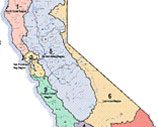The Case In Favor Of Filtering Stormwater
Groundwater is amongst the most important resources of water for drinking and households use. Water from rain and melted snow plays a significant role in replenishing and recharging groundwater resources. The rainwater that is absorbed into the ground after rains or melted snow turns into groundwater, whereas water that is does not absorb into the ground is referred to as runoff stormwater.
Previously, runoff stormwater was considered a nuisance that would lead to flooding and other problems. However, the new way of thinking views runoff as a valuable resource that could be used alongside Green Infrastructure (GI) or Low Impact Development (LID) initiatives to help the environment and preserve treasured water dependent features such as lakes, rivers, and streams.
What Is Stormwater Filtration?
Stormwater filtration is a part of the stormwater treatment system that filters stormwater runoffs and removes contaminants and pollutants, to make it suitable for use in households, industries or most importantly recharging the groundwater.
Limitations of Soil as a Filter
Runoff stormwater can pick up numerous different types of pollutant or contaminants before it soaks into the ground or is collected. The U.S. Environmental Protection Agency (EPA) categorizes stormwater runoff as significant cause water pollution, which proves that run off stormwater may not be as clean as we think. Experts who are not in favor of filtering stormwater make the case of soil being an effective filter that removes many contaminants as the stormwater percolates through the porous soil. However, soil’s filtrating abilities are ineffective against some chemical contaminants including nitrates. Sandy soil is even less effective in filtering pollutant.
Stormwater filtering has been producing quantifiable results for many decades. Stormwater filtration methods including the StormFilter and Jellyfish Filter have yielded results that would make pre-treatment more advantages for Green Infrastructure (GI) or Low Impact Development (LID) initiatives.




